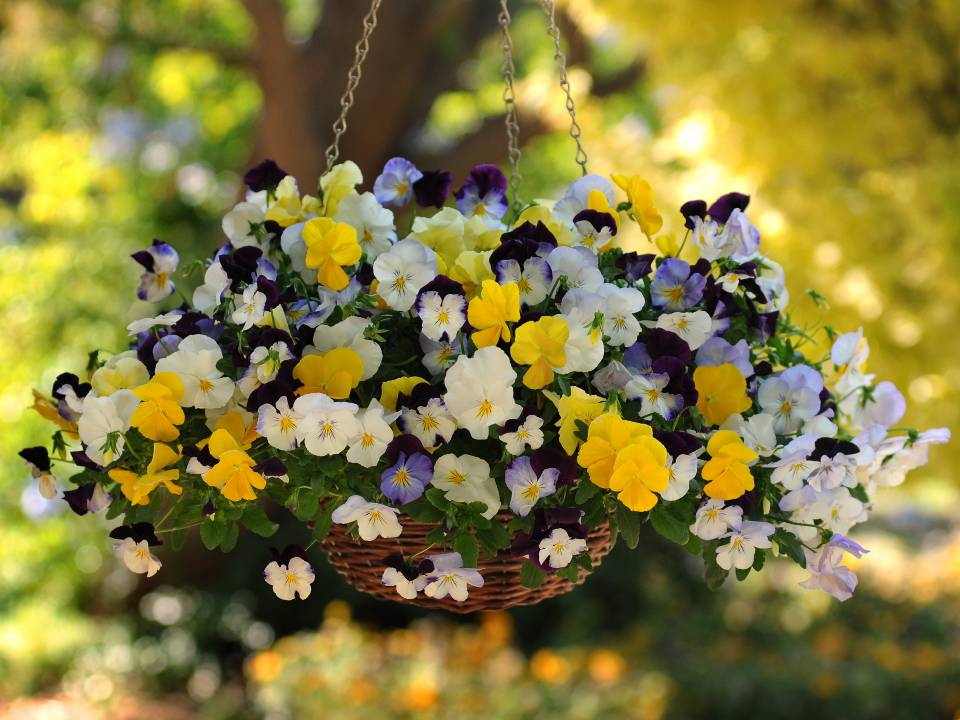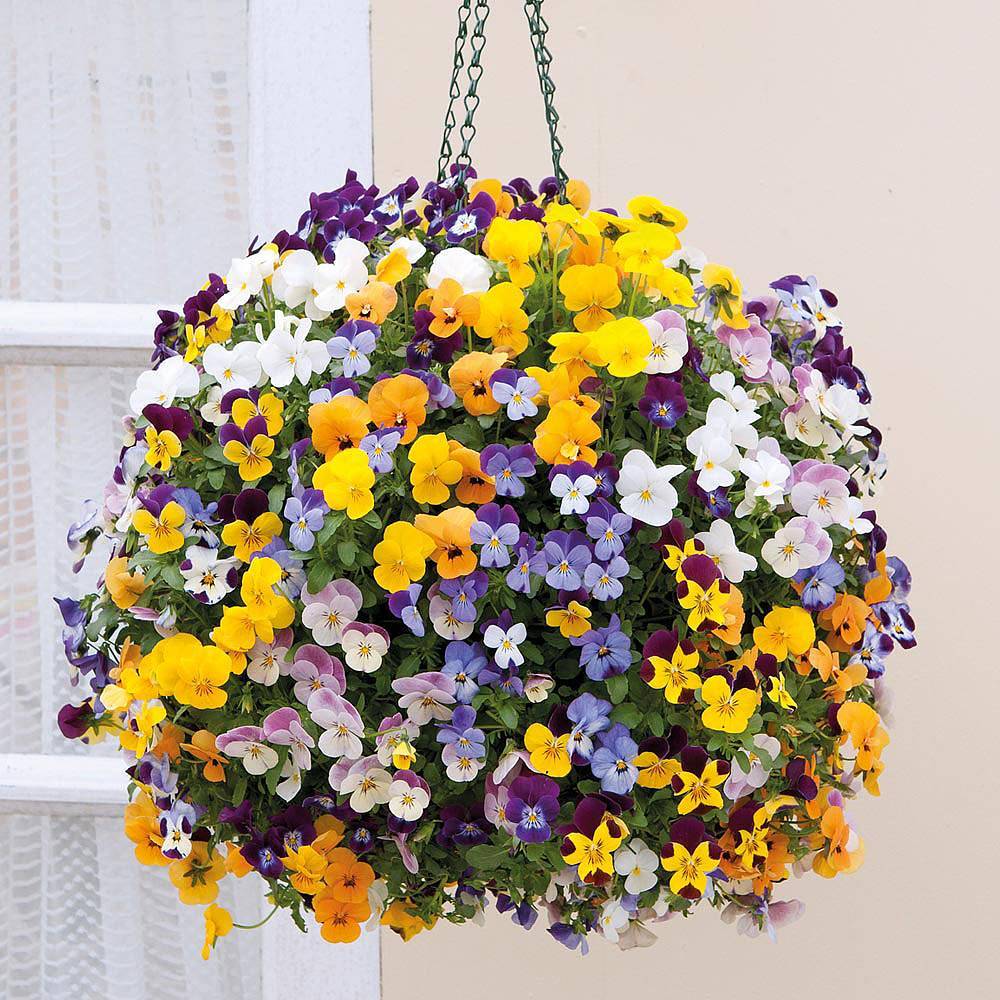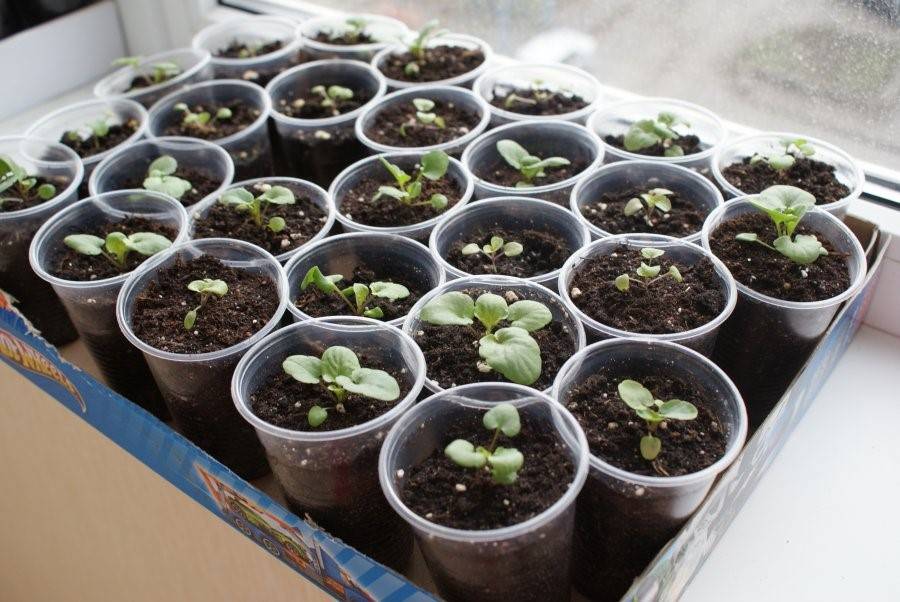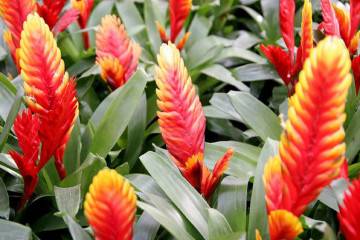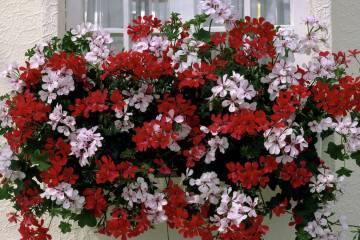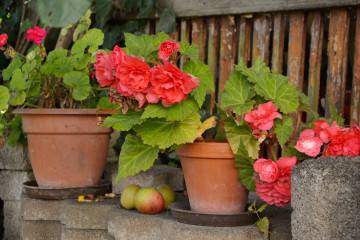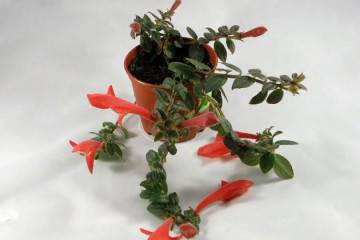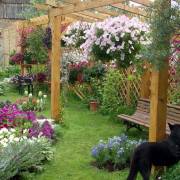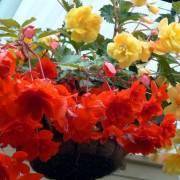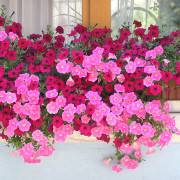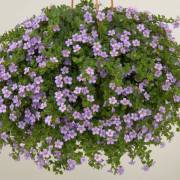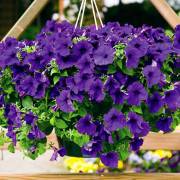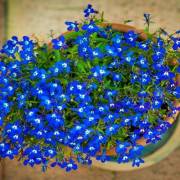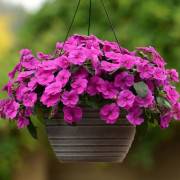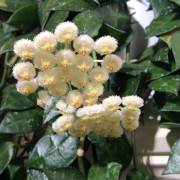Viola ampelous or pansies - growing and care
Content:
Since ancient times, pansies have been the favorite flowers of the inhabitants of the planet. A related variety, ampelous viola, also won a worthy place in summer cottages and garden plots. These hanging plants allow for dotted decoration of gazebos, terraces and other recreational areas. The abundance of varieties and varieties of culture allows you to create many different compositions only from viols or combine them with other plants.
Viola ampelous or horned
Viola ampelous (horned) is usually grown as an annual. Sometimes it can be saved until next season. The plant is a spherical bush with half-meter shoots, but the total height of the bush does not exceed 20 cm. Flowers are small and large. Depending on the variety, the diameter of the flowers can be up to 4 cm.
The leaves of the culture are oval-elongated, the flowering period is very long - from spring to frost. The petals are bright and can be solid or multi-colored.
Of no small importance are:
- culture tolerance to sudden temperature fluctuations;
- fast growth;
- early entry into bloom.
Ampel viola in a flowerpot
Ampel is translated from German as "hanging flowerpot". The very name "ampelous viola" speaks of its purpose. Although at the beginning of the growing season, the shoots grow vertically, but closer to the beginning of flowering, they begin to tilt downward with a waterfall. The more buds, the more they fall. This property indicates the appropriateness of their use in hanging pots.
Varieties of ampelous viola
More than 200 species of viola grow on the earth. In modern times, dozens of ampelous varieties of culture have been bred. Breeders work tirelessly to get new ones.
Cool Wave Mix Impruvd
One of the most popular is the ampelous viola Cool Wave Mix Impruvd. The variety has outstanding shoots. The lash of 75 cm is covered with flowers of various shades. The buds are large. The diameter of the flower is about 5 cm, while the bush is compact. The height is only 15 cm (below the culture average).
Perfect for decorating places of rest, use for decorating flower beds.
Old Spice Mix
Old Spice Mix is a kind of culture. Bushes are compact, no more than 25-35 cm in diameter. Long shoots have many colorful buds. Each flower has its own individual scent. By the way, they can be used for food.
For better decorativeness, it is better to keep the plant in partial shade.
Viola Hederacea ampelous
Australia is considered the birthplace of Hederacea ampelous. Not being the most popular, however, the variety very quickly spread across the American continent, Europe and Russia. The reason for this can be called the flowering of the plant in calm, pearl tones. By the color of the petals, they are more similar to lavender. But the foliage is very beautiful. The leaf plates themselves are large, and their color is bright green.
Viola Hederacea ampelous is an unpretentious flower, but it should be planted only after the cessation of return frosts.
Viola ampelous: growing
Ampel pansies can be grown in vases with a volume of 2-4 liters. Containers larger than this volume are dangerous (they can break off under the weight) and do not look very nice.Soil suitable for viola is loose, nutritious, with a neutral pH. For example, you can suggest the following composition:
- garden land - 2 parts;
- peat - 1 part;
- humus - 1 part.
To grow annuals, sowing should be started from the end of January. If you need a two-year planting option, then you need to sow seeds until mid-July. Viola will bloom next year.
When growing in a residential area, it is better to choose windows to the east or west.
Ampel viola: growing from seeds
You can grow viola from seeds. There are three ways to get new plants. They can be described as follows:
- With instillation. That is, grooves with a depth of 0.5 cm are pressed through at a distance of 1 cm from each other. Seeds are spread along the bottom of the furrow with a frequency of one seed per 0.1-0.2 cm. Further, the crops are sprinkled with earth and covered with a film (glass). For better seed spitting, the container with crops is exposed in a dark place at room temperature.
- Surface. With this method, the seeds hatch faster, since they do not need to overcome the soil layer. The seeds are sown over wet soil. Further actions are the same as for the first method.
- Combined. With this method, the grooves are not pressed through, but the seeds are sprinkled with earth. Further care is the same as in the first two options.
In all three cases, the first shoots may appear in 10 days. Sometimes, when using the instillation method, the process takes 15-30 days.
As soon as the seeds have sprouted, the container is placed in a bright place. The duration of daylight hours should be at least 14 hours a day.
After the appearance of a couple of real leaves, the seedlings can be dived. You can plant each plant in individual cups or simply plant at a short distance in one large container. It is important to deepen the root well. Then the plant will be more resilient. After the appearance of three pairs of leaves, the crown of the seedling must be pinched. So the viola will start to bush.
Watering mode
When growing a crop, you need to carefully consider the irrigation regime. The soil should always be slightly damp. The regularity of watering depends on the humidity of the ambient air. Near heating appliances, the soil dries out much faster. But stagnation of water at the bottom of the pot is unacceptable. In marshy conditions, the roots can rot.
Top dressing
You don't have to worry about feeding. For viola seedlings, nutrition from the planting soil is sufficient.
Planting in pots
Outdoors, viols are ready to disembark in May. If the plants are to be hung indoors (terrace, loggia, veranda), planting can be organized in March-April.
The container for planting (pots, pots, wicker baskets, balcony boxes) should be thoroughly disinfected (rinsed in a solution of potassium permanganate). The volume of the pots must be at least 1 liter. Optimally 2-3 liters.
The landing procedure itself looks like this:
- Drainage is poured at the bottom (expanded clay, pebbles).
- Soil is poured over the drainage.
- A hole is made 6-7 cm deep.
- A seedling with an earthen clod is placed.
- The soil is poured to the surface of the container.
- The plant is watered.
Adult plant care
Caring for an adult plant includes watering and fertilizing. If we talk about preserving the decorativeness of the flower, then you need:
- provide a temperature regime within 10-25 ° C;
- pruning, including radical, that is, shortening to 5-7 cm from the root;
- protect against fungal diseases (powdery mildew, spotting, gray rot), that is, treat it with a fungicide (sprinkle with ash, wash with soap solution) when an ailment appears;
- loosen and weed the root zone.
Growing ampelous viola in compliance with these rules will help to achieve optimal results.
Illumination
In central Russia, almost all types of ampelous viola tolerate direct sunlight well. This only increases the abundance of flowering. But if the flower is kept in partial shade, the flowering will be longer. Partial shade will be safer for the flower anyway.
Watering and fertilizing
Viola, hung in a flowerpot, is completely dependent on the person. It will not work to draw moisture out of the ground. Therefore, plants need daily watering. The soil should not be allowed to dry out, but it should not be poured either. Water for irrigation is desirable settled and warm. The rain is best.
During the entire growing season, the culture needs additional feeding. Complex mineral fertilizers for flowering plants are suitable for this. Organics are contraindicated. Enough two dressings per month. If there is not enough nutrition, then the buds become smaller and the foliage withers.
The introduction of fertilizer diluted according to the instructions is recommended from the edge of the pot to the center. The jet should be light. It is better to combine top dressing with watering, and these procedures should be carried out in the evening or early in the morning.
Viola ampelnaya is a flowering plant of universal use. It can be hung out in resting places, planted in a flower garden, grown in unheated home premises. A variety of varieties will allow you to find options for every taste.

